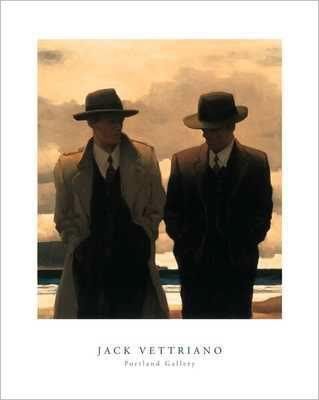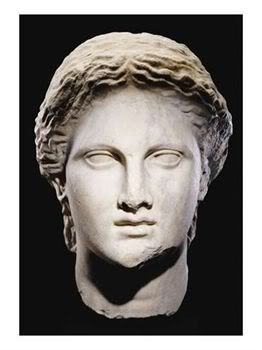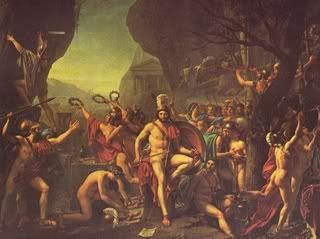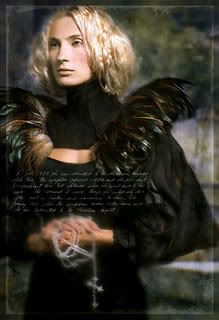
It is always exciting to learn how a perfumer's mind ticks and Konstantin Mihov is such a case: his mind has creative ideas and searches for techniques that might apply these ideas into tangible reality for the delectation of perfume lovers.
Here at Perfume Shrine we have dealt we his work once before, when reviewing Alice In Wonderland, a fairy-tale creation of mint tea and violets that brings us back to our magical and twisted childhood of Alice and the magical creatures she meets, seeing just how deep the rabbit hole is.
Now, Knostantin Mihov is revealing the thinking that goes behind his creations and the things that fascinate him about perfumery in the first place.
Let's hear it from him...
Talk to us about yourself a bit: what are you involved in, what do you do besides making perfumes?
Talking about myself is perhaps the one thing that takes ages and that I am most clear about (at least when it comes to my current aspirations, ambitions, positions, etc. - if you ask about the past, I can sum it up in 5 sentences). At the moment, I am in my last year of BA degree in integrated social and cognitive psychology and I am currently in the process of finding another university for my PhD degree in theUK in social neuroscience. My aspirations are to stay in academia forever - PhD, postdoctoral fellowship, professorship, research, until retirement (possibly at different places, possibly in different countries - I consider myself citizen of the world). My current research interest varies and will perhaps continue to change and with each step in the academic development I will experience a new field of exciting insight and will probably be switching specialization areas from time to time. Currently, I am very much interested in gender differences in language use,attribution mechanisms, facial expressions and particularly smiles (oh, and yes, we are talking about basic research and not so much about applied research although I have done some applied things as well - currently I am working with several other colleagues on an intercultural competence e-learning programme for a big multinational company with head-offices in Germany).
My other hobbies include piano playing, bookbinding, and photography. For the latter two I haven't had much time lately (no surprise) and probably won't have time in a long time but I do still enjoy taking pictures at some particular events (recently I was taking photographs of a performance of the Vagina Monologues).
The one hobby which is perhaps never going to die whatever happens is piano playing.
I have been performing for the past 8-9 years (which may sound as a long time but I started too late) and I have never had the intention to make a career out of it but it certainly is very rewarding to set up a piano recital once in a while (my next one is on the 20th April), to invite your friends (as well as open it for the public) and donate all the proceedings from the entrance fee to a good cause. It is an extremely rewarding experience to stand in front of an audience and to literally play with their emotions. And although I am far from being a professional making no mistakes (in fact, I make quite many), it is for the sake of passion - and I think this manages to compensate for my mistakes and makes the people come again and again. My next recital, btw, is entitled "Alice in Wonderland: a Story in Characters" and is going to tell the story of Alice and all the people and creatures she meets in terms of musical pieces. The room will also be scented with my perfume Alice In Wonderland(the last concert was dedicated to the Ambient Rose and the room smelled of roses).
Sounds like you have a great time there, Konstantin! Tell me however how have you become involved with perfume in the first place? When did you first realize you liked it?
My entrance in the world of perfumery was "accidental". If it weren't for my aunt who is very much into botanical essential oils, basis oils and all these cosmetics (she makes everything that she uses herself), I wouldn't be doing what I am doing. I have always enjoyed fragrances but I would have never thought of making my own if it weren't for these first experiences.
Uh huh...those formative experiences are always interesting. Was there a specific incidence that inspired you?
My very first fragrance mixtures were made entirely of naturals and I do remember one that I wish I still had the formula for (it got lost in all the move from Bulgaria to Germany 3 years ago when I switch to another computer and lost some of the information I used to have) - it was a very raw green earthy and leathery scent -very much along the lines of Bandit but it was lighter and smoother and less sparkling. And I have been working ever since (that was about 7 years ago). Only about 3 years ago, did I discover the charm and possibilities of synthetically produced molecules (both that occur naturally in some plants and those that do not exist in nature) and have been experimenting with them little by little into rounding formulations, into accenting what is needed, and into providing nuances that could not be achieved otherwise.
Now that you mention Bandit...What were the perfumes that you held as prototypes or inspirations in your mind before becoming involved in perfumery? The perfumers who influenced you most?
In the very beginning of my perfumery obsession, I was familiar with the usual department store fragrances. And I always had the tendency to go for thicker, oriental type of fragrances although I did enjoy occasionally musky, woodsy scents. But as soon as I was introduced to Serge Lutens fragrances, I was fascinated beyond comprehension. And I still am - there isn't perhaps a single fragrance from his collection that I would not love to have a bottle of - they are all in their own right personal and in terms of the entire collection they create perhaps the most coherent and yet innovative palette that is on the market. And I am still inspired by his creations - his new ones (which show a certain change from the earlier ones)
as well as from the old ones with their magical connotations. I am also very much enchanted by Jean-Claude Ellena's minimalist style which is unattainable for me (I tend to have a less patience in the fragrance exploration that he does). I also admire the vision of Edmond Roudnitska - not so much the fragrances per se; rather the fact that he took his time in the careful evaluation of his fragrances and his critical evaluation of publishing only 16 in his lifetime.
I also must pay due respect to Andy Tauer who has also been an inspiration esp. considering the size of his small business and his reliance on natural ingredients much as I do.
Very heartening to hear for Andy who is a great person, no doubt about it. Speaking of ingredients, what ingredients do you mostly use and why did you choose to work with those? Is sourcing them hard to do?
I have a particular interest in flower absolutes as well as animalistic notes. With each perfume I have created so far (and maybe I should say that of all the mixtures variations, etc, I would consider only 3 to have been completed) there is a very different line explored in each. Alice in Wonderland relies on the synthetic representation of violets enhanced by natural woods, green essences and fresh citrus. Eleven Minutes (a perfume that was created specially for an exhibition) was centered around green absolutes with exploration of a particular citrus line in it. And O Alquimista (perhaps the next perfume that I will release) was an 8-month venture in exploring tobacco absolute, rose absolute, amber and plums to end in a typical Oriental fragrance with a touch of transparency and certain wetness - characteristics that are not typical of any of my other creations.
And this is what I find particularly enchanting and educating - the exploration of different nuances, different characteristics, different tastes.
Do you find there is a different aesthetic working with naturals or synthetics? Why? The topic seems to be somewhat controversial.
I would not really make a difference between synthetic and naturals when it comes to the aesthetic creation of the scent per se. There are naturals that smell absolutely vile and poisonous in their raw form but so do some synthetics. On the other hand, there are naturals that smell divine in their raw form and so do some synthetics. There are some effects that cannot be achieved with natural ingredients - for example, the creation of a musky note is challenging; velvety amber, suede, and some floral accords are unthinkable without the synthetics. And since I have never been driven by the idea of creation a scent with either natural or synthetic excluisively, I am treating them with equal respect - for me they are just part of the palette - and I use the entire range of the palette that is available to me. Alice in Wonderland would have been unthinkable without the synthetic violets or the coumarin.
Coumarin...it's going to be a restricted commodity if that IFRA restriction thing prevails. But to return to Alice in Wonderland : it makes use of ionones for violet notes, you say. Did you find them easy to work with? What problems did you face, if any?
There are 3 types of ionones in Alice in various concentrations. Ionones are very diverse - the differences are very small but they can influence a mix
greatly. I find them really lovely to work with because they add a certain smoothness to a composition. On the other hand, they do not have any sparkle of their own and sometimes, it can be hard to create a sparkle without destroying their character. For Alice, I think the two types of Cedarwood (Virginia and Atlas) did the trick as well as the minute quantities of coumarin, vanillin, amyris and ambroxan.
It deeply impresses me that you openly talk about what goes into your perfumes. Why do you think there is such secrecy in the perfume world, in general, though?
I believe the secrecy is guided purely by the commercial grip that surrounds the perfumery world - in particular, it is amazing that commercial successes will get copied in all forms and shapes. And this is what drives the secrecy I believe. SinceI never envisioned this into becoming a large scale endeavor, I do not feel particularly threatened. Esp. when I do not aim at creating commercial successes (because that would mean that it is liked by many and I would in fact prefer if my perfumes are liked only by few but also not just liked but loved). And if a perfume works like a vision for some, this is all that matters to me. Besides, from purely statistical terms, the chances of recreating a formula given the initial ingredients are very low - and they get lower the more complex the formula is.
Too true. Which is your favourite essence to work with? What aspects of it do you like?
I particularly love Ambroxan - it is a synthetic molecule that has a very peculiar wet cardboard, leather, amber nuances and extreme diffusive power. I also like a lot guaiac wood concrete which has a very doughy quality which I adore. Rose and Jasmine absolutes are also favourites of mine along with benzoe and beeswax absolute. From the synthetics, I am always fascinated by melanol for its extreme strength and its ability to create the impression of water - pure water in a perfume. Tobacco absolute was a love at first sniff but it is difficult to work with. For example for my O Alquimista, only about 0.6% of the entire formula (of the concentrate) consists of tobacco absolute but it is so strong. And I used a lot of benzyl-benzoat to soften it (I found this combination to work quite by accident) and it works. I also like a lot some tinctures, in particular castoreum tincture which has a
fantastic leathery and quite animalic character as well. I also employ quite a lot of propolis tincture in my mixtures (there is a lot of it in O Alquimista and in Eleven Minutes) although it does not really have a strong smell - to me it adds a touch of density, smoothness and rounded sweetness. Propolis is one of the most wonderful things that I have smelled and I still dream of creating a fragrance that captures its facets (and beeswax absolute is very different).
What are your plans for the future? Do you see yourself expanding the line?
The line may expand little by little with inclusion of new scents from time to time but since this is not my day job if at all, any expansions will be problematic. I would of course dream of finding a cooperation with a small perfume producer or a company that can handle the publication of one or two of my perfumes but I personally would not have the capacities esp. with respect to the pursuit of an academic career. I see the whole adventure as a slow progression, a bottle here, a bottle there, a new perfume once in a while, perhaps retirement of old ones until requested again. The whole process may be also problematic in the coming year or so due to my probable moving to the UK and the need to find new suppliers and settling in the new place. So, the whole process is not going to be a smooth progression by any means.
Let's hope for the best. On another note, do you have any advice on those starting in perfumery?
Don't try to please everybody - if you make one person love your perfume, you should be proud. And aim at intellectual creations - something that tickles your brain - whether it will be the combination of notes, or the name in conjunction with the perfume, or the bottle - perfumery is rather an intellectual experience (I think it was Luca Turin who also said that perfumery is about chic and intelligence).
You are correct and I agree with this view. If you had one wish for the perfume industry what would that be?
The one wish I would have would be to break free from the consumerist society. However, as a psychologist (and someone not so blank in market economy as it may seem) I know that this is not possible in my generation. So, more realistically, I would simply request aesthetics (which is not the case for most of the 600-800 fragrances launched every year).
Thank you very much Konstantin for the interesting interview and honouring me with your time.
Thanks for giving me a chance to air my views.
Please visit Konstantin Mihov's site clicking here.
Artwork "Amateur Philosophers" by Jack Vettriano courtesy of Allposters.com
.jpg)






.jpg)



